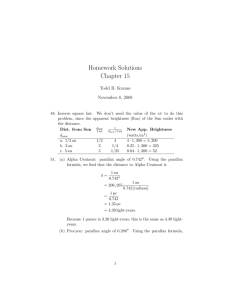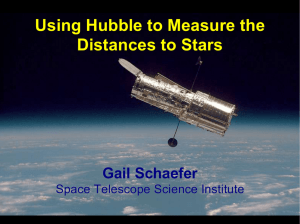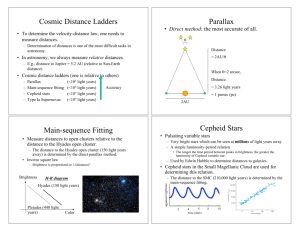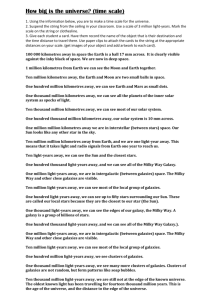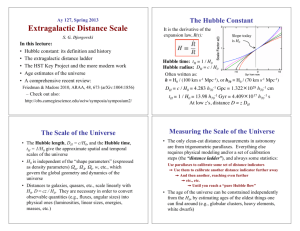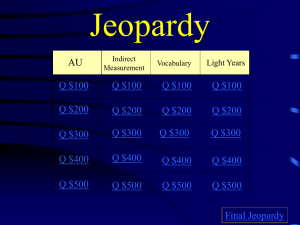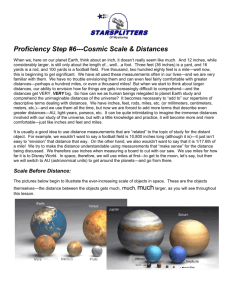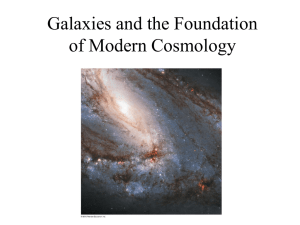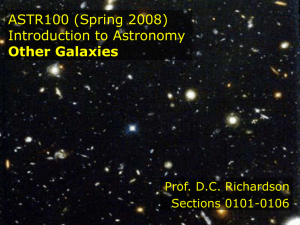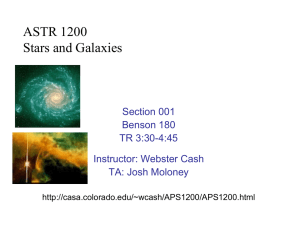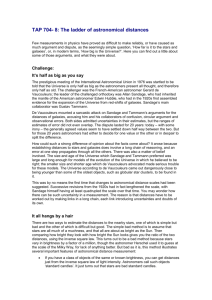Notes on distance measuring techniques
advertisement
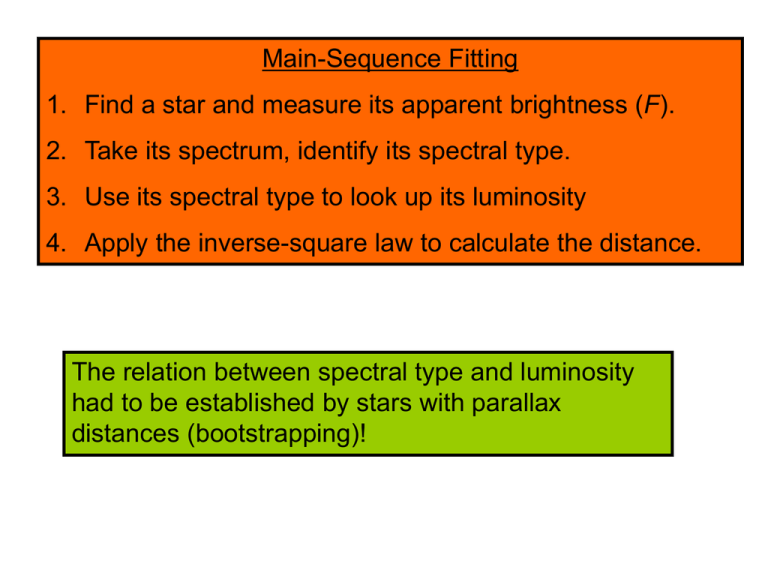
Main-Sequence Fitting 1. Find a star and measure its apparent brightness (F). 2. Take its spectrum, identify its spectral type. 3. Use its spectral type to look up its luminosity 4. Apply the inverse-square law to calculate the distance. The relation between spectral type and luminosity had to be established by stars with parallax distances (bootstrapping)! Astronomical Distance Ladder! Method Objects Distance Calibrated 1) Radar solar system 1 AU 2) Parallax nearby stars 1,000 light-years Radar 3) Main-sequence fitting distant stars 10,000 light-years Parallax Cepheid Variables 1. Find a Cepheid Variable star and measure its apparent brightness (F). 2. Record its light-curve, and measure the period of variation. 3. Use its period to look up its luminosity. 4. Apply the inverse-square law to calculate the distance. The relation between period and luminosity had to be established by stars with main-sequence fitting distances! Tully-Fisher 1. Find a spiral galaxy and measure its apparent brightness (F). 2. Measure its rotation velocity from the Doppler Effect. 3. Use its rotation velocity to look up its luminosity. 4. Apply the inverse-square law to calculate the distance. The relation between rotation velocity and luminosity had to be established by galaxies with Cepheid distances! Supernovae 1. Find a Type Ia supernova explosion and measure its apparent brightness (F). 2. Measure the light curve and record the decay rate. 3. Use its decay rate to look up its luminosity. 4. Apply the inverse-square law to calculate the distance. The relation between light curve decay and luminosity had to be established by galaxies with Cepheid distances! Any Standard Candle Method!! 1. Find a whatever and measure its apparent brightness (F). 2. Measure some property of the whatever that relates to its luminosity in a known way. 3. Use that property to look up its luminosity. 4. Apply the inverse-square law to calculate the distance. The relation between the property and luminosity had to be established by objects with known distances! Astronomical Distance Ladder! Method Objects Distance 1) Radar solar system 1 AU 2) Parallax nearby stars 1,000 light-years Radar 3) Main-sequence fitting distant stars 10,000 light-years Parallax 4) Cepheid variables nearby galaxies 108 light-years M.S.F. 5) Tully-Fisher relation distant galaxies 109 light-years Cepheids 6) Supernovae distant galaxies few 109 light-years Cepheids 7) Hubble Law whole universe 1010 light-years Cepheids Methods 3, 4, 5, and 6 are all Standard Candle methods! Calibrated Scale of the Universe: Tour with Numbers Attached: 1. Distances between stars: few light-years. 2. Distances to galactic objects: nebula, star clusters, etc.: few thousand light years 3. Size of entire Galaxy: 100,000 light years, 100 billion stars 4. Distances to nearest galaxies: few million light years 5. Distances to distant galaxies: few billion light years 6. Limit of observable universe: 14 billion light years Distances throughout universe measured with 10% accuracy!! “The universe is vastly larger than any known human purpose could justify.”
